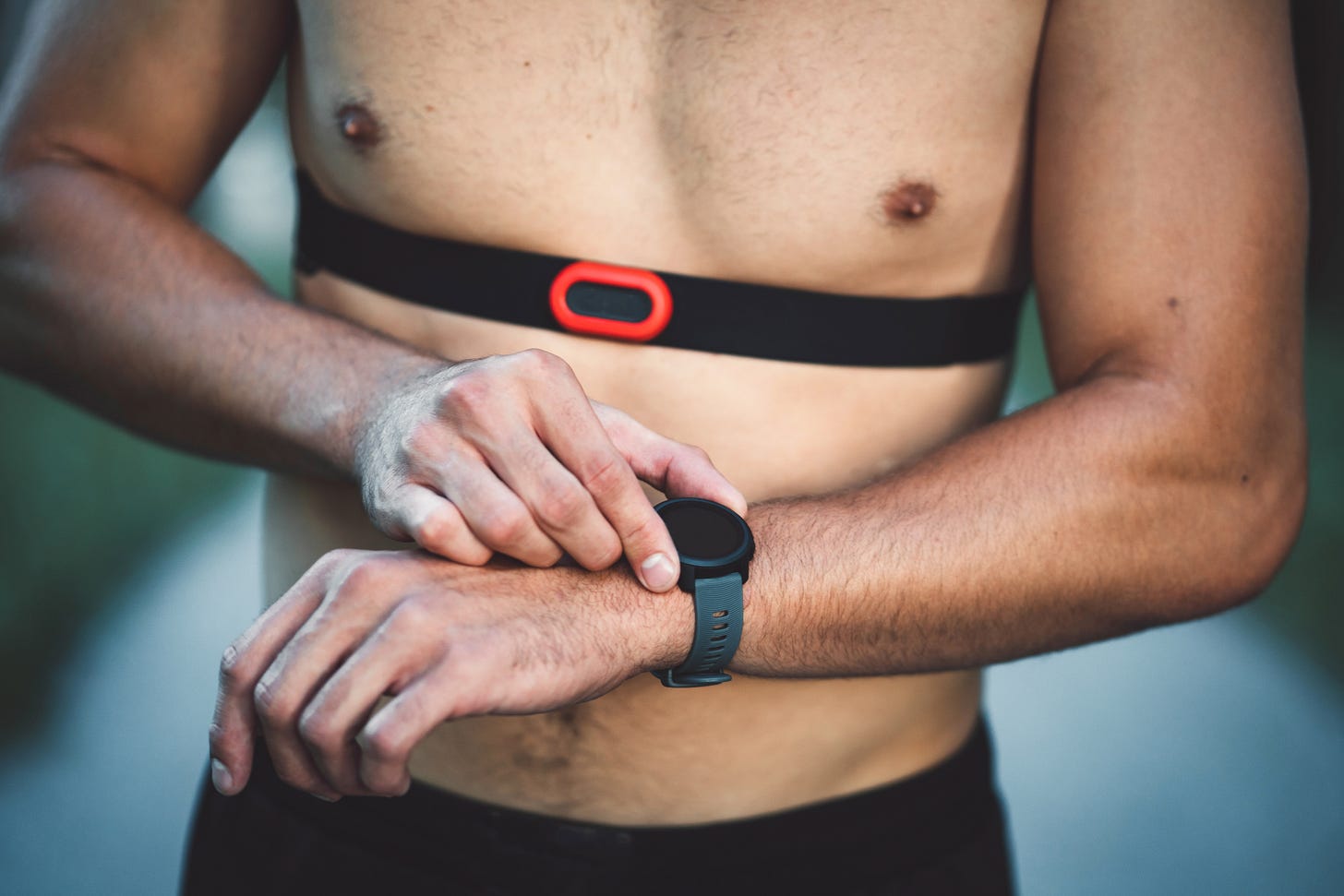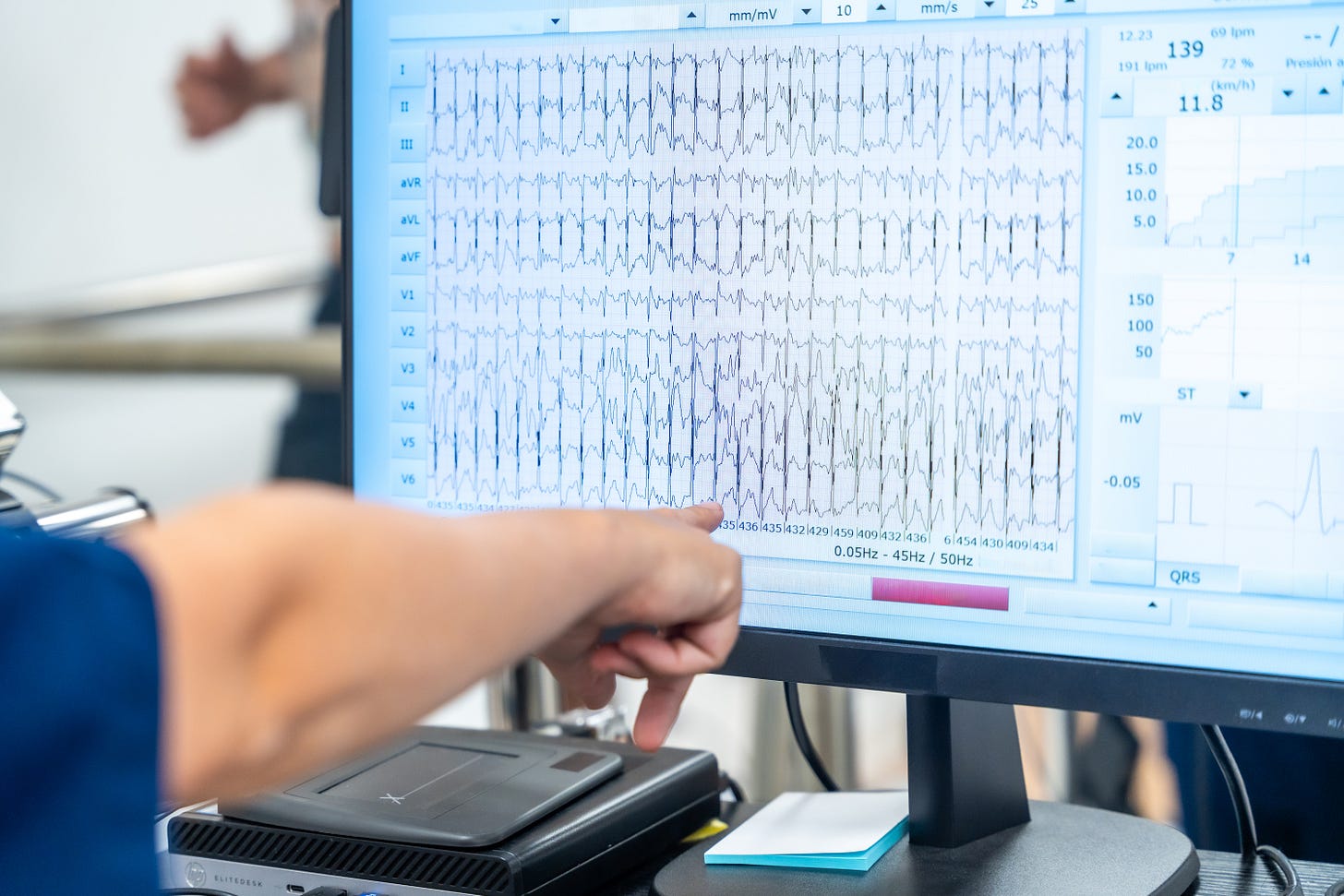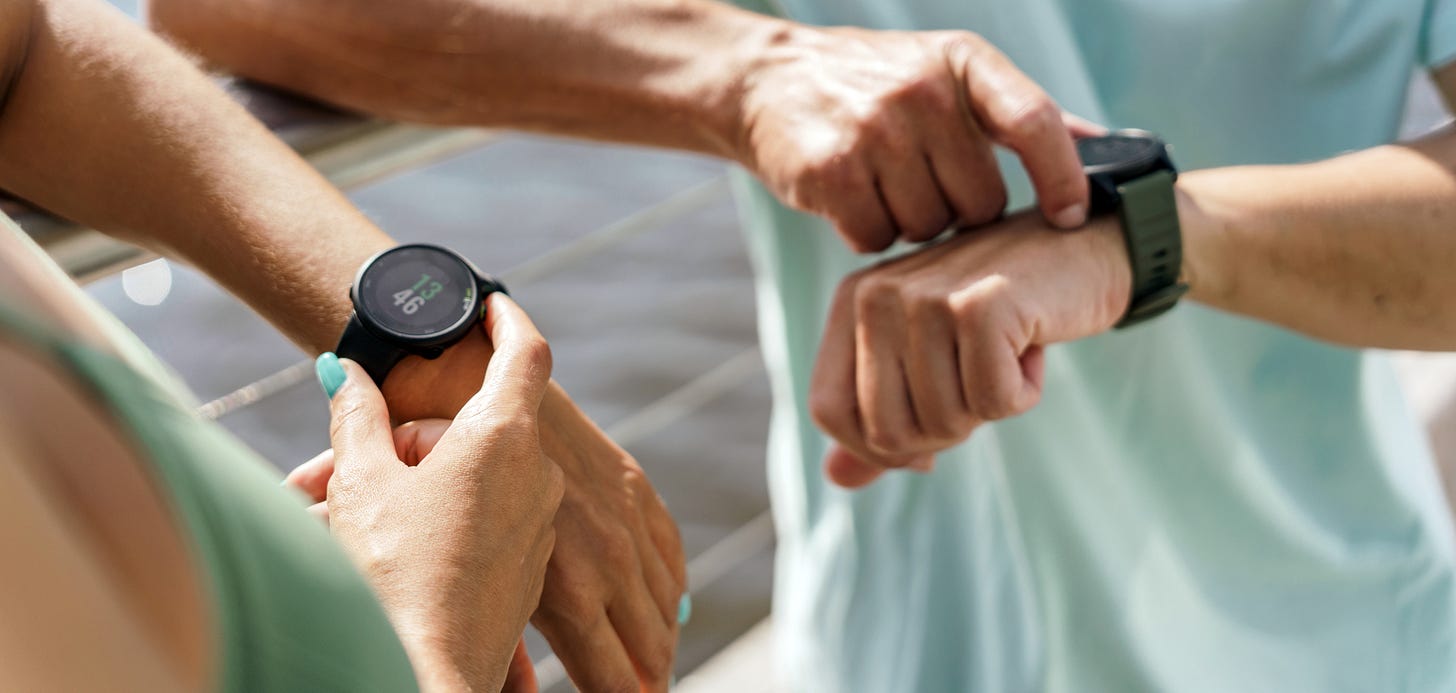Note on HRV: What It Means for Your Healthspan
HRV is one of the best ways to understand how well you're aging — and recovering. Here’s what it means, how to improve it, and how I’m thinking about it long-term.
Hi, I’m Shantanu. I’m building Xandro Lab, a science-first health brand focused on performance, recovery, and longevity — built in Singapore and expanding globally.
Two years ago, I didn’t know what HRV was. I thought if I slept well, ate relatively clean, and stayed active, I was doing okay. But the deeper I got into building this brand — talking to researchers, reviewing clinical data, looking at real-world biomarker tests — I kept seeing one number come up quietly but consistently: heart rate variability.
It’s not a flashy number. It doesn’t get celebrated on social media. But it says a lot about how your nervous system is functioning. Whether your body’s in balance. Whether you’re adapting well to stress or stuck in it.
Today’s write up isn’t a deep dive or medical lecture. Just a simple note — about what HRV is, how it connects to aging and resilience, how to think about tracking it, and what I’m personally doing (and not doing) about it.
Let’s get into it.
What we’ll cover
What is HRV, in simple terms?
Why it matters for longevity
HRV vs Resting Heart Rate (RHR)
How to track HRV — and when it matters most
My own challenge with tracking it daily
What I plan to do differently
The HRV protocol — habits that improve it
A simple takeaway if you’re just getting started
1. What is HRV, in simple terms?
HRV stands for heart rate variability — the small changes in time between each of your heartbeats.
It sounds like something you don’t want, right? “Variability” in your heart? But actually, more variability is a good thing. It means your body is responsive. Adaptable. Able to shift gears quickly depending on what you need — calm or focus, rest or movement.
Think of your nervous system like a gearbox. HRV is how smoothly you can switch between drive and reverse — between fight-or-flight (sympathetic) and rest-and-digest (parasympathetic). A healthy nervous system doesn’t stay stuck in one mode. It knows when to push and when to recover.
The more flexible that system is, the better you age. That’s why HRV is becoming a quiet cornerstone of how people measure recovery, readiness, and resilience.
2. Why it matters for longevity
Most people think of healthspan in terms of what you eat or how often you exercise. Those things matter — a lot. But underneath it all is a more fundamental question: how well is your body regulating itself?
That’s where HRV comes in.
High HRV means your body can shift from stress to recovery mode easily.
Low HRV means your system is stuck — often in overdrive.
Over time, chronic stress, poor sleep, alcohol, overtraining, or even emotional strain can pull your HRV down. And research shows that low HRV is associated with higher risk of cardiovascular disease, type 2 diabetes, and even all-cause mortality.
It also declines naturally with age — but not for everyone.
I’ve met people in their 50s with better HRV than some 30-year-olds. The difference? They manage stress. They train, but they recover. They sleep deep. They’ve built habits that support their nervous system — not just their muscles or metabolism.
So while HRV isn’t the only marker of longevity, it’s a powerful one. It shows you how resilient your system is — and how well you’re likely to handle the next decade.
HRV Ranges by Age (RMSSD)
Based on population-level data from wearables and clinical research. These are rough averages — what matters most is your personal trend over time.
Ages 20–29: Men: 60–90 ms | Women: 65–95 ms
Ages 30–39: Men: 50–80 ms | Women: 55–85 ms
Ages 40–49: Men: 40–70 ms | Women: 45–75 ms
Ages 50–59: Men: 30–60 ms | Women: 35–65 ms
Ages 60+: Men: 20–50 ms | Women: 25–55 ms
💡 Don’t get stuck comparing yourself to others. These are just benchmarks — HRV is highly individual. Focus on your own baseline and how it moves over time.
3. HRV vs Resting Heart Rate (RHR)
I used to confuse these two.
They both involve your heart, but they measure very different things. Here’s a simple breakdown:
Resting Heart Rate (RHR)
Measures how many times your heart beats per minute when you’re at complete rest.
A lower RHR generally means better cardiovascular fitness and heart efficiency.
Think of it as your engine idling smoothly — less work, more efficiency.
Heart Rate Variability (HRV)
Measures the variation in time between each heartbeat — not the rate, but the rhythm.
A higher HRV means your body is more adaptable and responsive to stress and recovery.
It reflects how well your nervous system can switch between “fight-or-flight” and “rest-and-digest” states.
In simple terms: RHR shows how efficiently your heart works. HRV shows how flexible your nervous system is.
They’re both useful — but they serve very different purposes. And for tracking recovery and long-term resilience, HRV tells a deeper story.
4. How to track HRV — and when it matters most
Now here’s the part where most people get stuck.
Because HRV isn’t something you just check once. It works best when you track it over time. That’s how you notice what helps, what hurts, and what trends are forming. But you don’t need to obsess.
The gold standard for HRV tracking is overnight measurements — while you’re asleep and your body is at rest. That’s when you get the cleanest, most reliable baseline.
Devices that track HRV well:
Oura Ring – probably the easiest to wear at night
Whoop – more performance-focused, worn on the wrist or bicep
Garmin – higher-end models have good HRV tracking
Apple Watch – tracks HRV but less consistent
Chest straps (like Polar H10) – great for short-term, real-time HRV (especially during breathwork or training)
You don’t need all of them. One is enough.
And you don’t need to track every single day. In fact, here are the best times to track HRV:
After a big training block or race
During a stressful work period
When testing how alcohol, caffeine, or late meals affect you
When trying a new supplement or recovery protocol
When your sleep has been off and you don’t know why
In those moments, your HRV can give you answers your mind can’t.
It’s your nervous system’s way of saying: “I’m okay.” Or sometimes, “Please slow down.”
5. My own challenge with tracking it daily
Here’s the honest bit. I don’t track HRV every night.
Not because I don’t believe in it — I do. It’s one of the most meaningful metrics I’ve come across in the last two years. But I’ve struggled to make it a consistent part of my routine for one simple reason: I can’t sleep with a device on my wrist.
I’ve tried. I’ve worn my Garmin, and I am planning to get the Whoop 5.0. Every time I roll over in bed, I feel my watch. There’s a constant awareness that something’s on my body. And once I’m thinking about it, I’m not fully asleep anymore.
And if the goal of tracking HRV is to understand how well I’m recovering… then sacrificing sleep to measure sleep feels like the wrong trade.
I know a lot of people who feel the same way. So if you're one of them — it’s okay.
This doesn’t mean you ignore HRV completely. It just means you find other ways to engage with it.
6. What I plan to do differently
I’m not giving up on HRV.
In fact, I’m starting to see it as one of the core signals I want to track for the next 10 years — alongside muscle mass, inflammation, cognition, and sleep.
But I’m approaching it differently now. Instead of daily tracking, I’m planning to:
Track HRV in 3–5 day sprints during high-stress or recovery windows
Use morning readings with a chest strap (like Polar H10) to get snapshots
Retest when I’m experimenting — new routines, supplements, changes in sleep
And as wearables get better — thinner, lighter, more skin-like — I’ll probably try again.
Because over time, I do want HRV to become a regular part of my check-in system, especially as I think about how I want to feel in my 40s and 50s.
This isn’t about being perfect. It’s about building habits that last.
7. The HRV protocol — habits that improve it
Whether or not you track it every night, you can still improve your HRV. And that’s the part I find most useful. You don’t need another device or subscription — just a few habits that support your nervous system.
Here’s what’s worked for me and what I’ve seen repeated across research and practice:
Prioritise deep, consistent sleep
Probably the biggest lever. When sleep is good, HRV goes up. When it’s off — even slightly — HRV tends to crash.Get regular zone 2 cardio
Light, steady-state movement (like walking, cycling, or slow jogging) helps build long-term autonomic flexibility.Do cold exposure a few times a week
Ice baths, cold plunges, or even short cold showers can activate the vagus nerve and improve parasympathetic tone.Practice slow breath work
Especially breathing at six breaths per minute. It’s simple, repeatable, and often gives an immediate boost in HRV.Take magnesium glycinate
It’s not magic, but I’ve found it helpful — especially when sleep is inconsistent or I’ve been training hard.Use sauna post-workout
There’s something powerful about exposing your body to heat stress, then letting it cool down. It seems to regulate HRV over time. More gyms are introducing sauna and cold plunge recovery options.Reduce or eliminate alcohol
Even one or two drinks can drop HRV for a full day or two. This one is very obvious once you start tracking.Avoid overtraining
More is not always better. HRV can tank after consecutive intense workouts.
You don’t need to do all of this at once. Even one or two of these habits — done consistently — can move the needle over time. HRV responds to how you live, not how perfectly you measure.
8. A simple takeaway if you’re just getting started
If you’ve never tracked HRV before, or you’re only just hearing about it — don’t overthink it.
You don’t need to buy a new device. You don’t need to become a data person. You just need to understand what this number represents: Your body’s ability to recover.
Start there.
If you want to experiment:
Try tracking HRV for a week using an app or wearable you already own.
Pay attention to how it changes with sleep, alcohol, stress, or even late meals.
Pick one habit — breathwork, zone 2 cardio, better sleep — and see what happens.
And if, like me, you’re not ready to track it every night, that’s fine too.
You can still build a routine that supports better HRV without checking the number every day.
Because in the long run, this isn’t just about the metric.
It’s about building a body that can handle what life throws at it — and bounce back stronger.
P.S.
If you ever feel overwhelmed by all the tracking — you’re not alone.
Too much data can sometimes be its own kind of stress.
You don’t need to check HRV every single day. In fact, it’s often more useful to zoom out — check in every few weeks or months, or during periods when something feels off. If you're not feeling your best, that’s when it might make sense to start paying closer attention to the numbers.
And if you do choose to track HRV, it helps to know what you're actually looking at.
Most wearables — like Garmin, Oura, Apple Watch, and Whoop — report a metric called RMSSD, which reflects short-term nervous system flexibility. It’s especially sensitive to rest, stress, and sleep quality — making it ideal for daily or overnight tracking.
For a more comprehensive picture of your nervous system across a full day, there’s SDNN — a metric usually measured through ECG-based devices or 24-hour Holter monitors. You’re unlikely to see this in wearables, but it's often used in clinical and athletic performance settings.
🧠 TL;DR
If you're a general user tracking recovery and daily resilience, RMSSD (what most wearables show) is enough.
But if you're a clinician, athlete under intense load, or someone wanting to understand overall autonomic function over a day, SDNN — measured via ECG-based devices over 24 hours — gives you the big picture.
Thank you for taking the time to read this. 🙏
It means a lot that you’re here — following along as I explore these ideas and build Xandro Lab from the ground up. If you think someone else in your life would benefit from these writings, please feel free to share it with them.
And if someone you refer mentions your name — I’ll happily offer them access to the paid version for free. That’s my way of saying thank you for helping grow this community the right way.
I’d also like to start sharing a little more about what’s going on — personally and professionally — at the end of each write-up. It’s nice to be known a little more. To speak to more people. And maybe even make a few unexpected friends along the way.
That’s part of why I’m writing too — not just to teach, but to connect.
Wishing you a good week ahead.
— Shantanu





